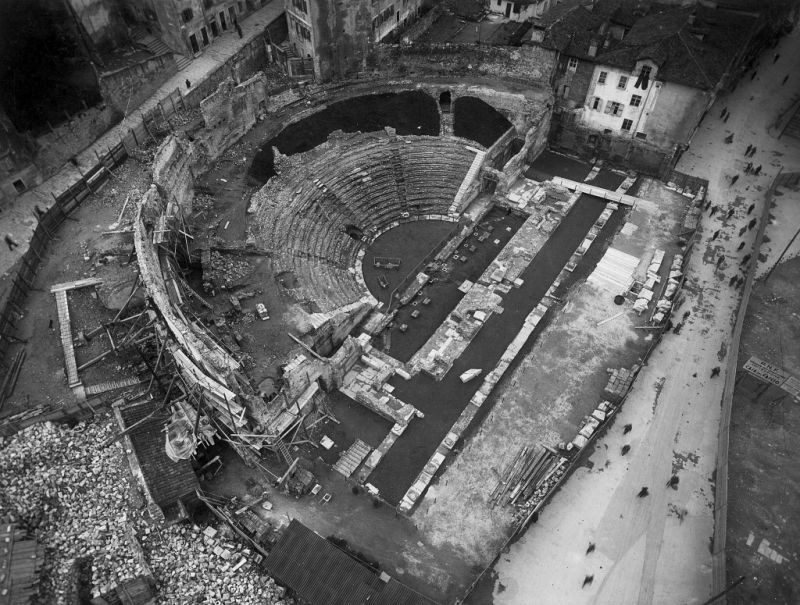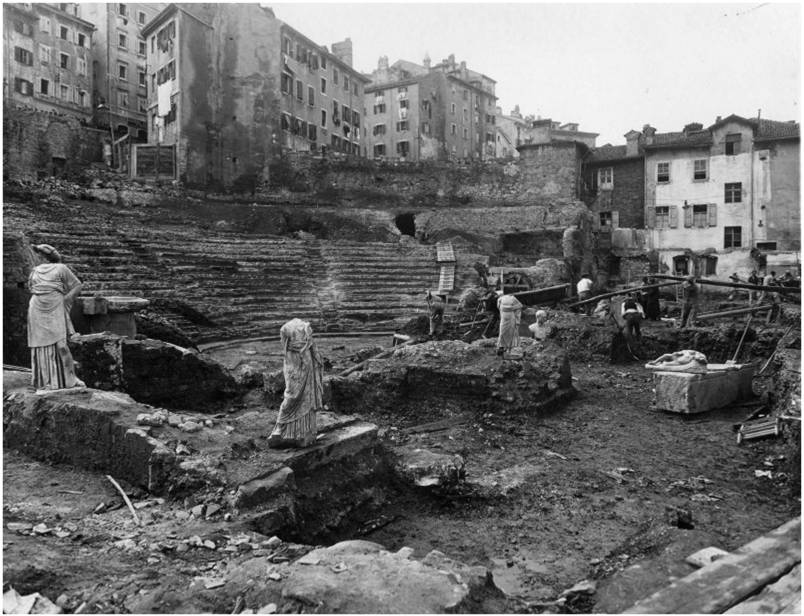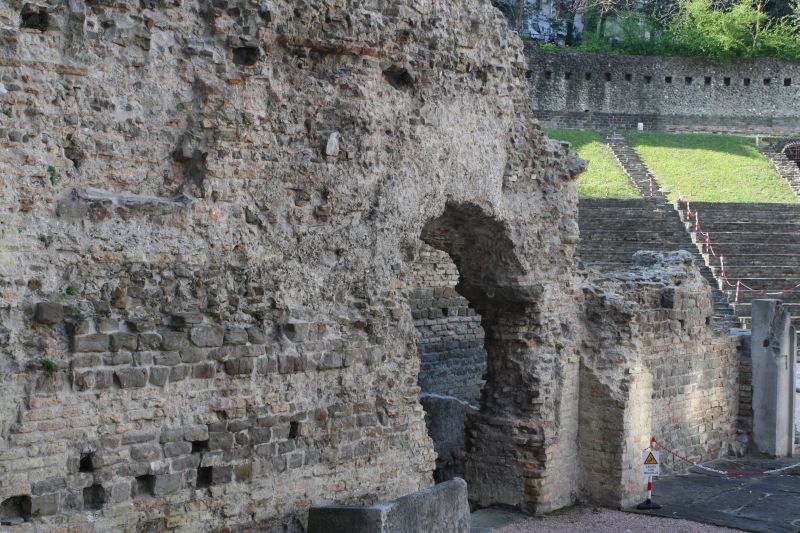The Roman Theater of Trieste

The ancient Tergeste was founded around the middle of the 1st century BC. in an area between the San Giusto hill and the sea. The main town testimony of this period certainly remains the small theater dating back to the imperial era. It is a small arena, built between the 1st and 2nd centuries AD by the emperor Quintus Petronius Modesto.

The theater was brought to light only in the thirties of the last century by the architect Pietro Nobile, eliminating some medieval houses that had been built using its walls. The discovery was followed by a long period, in which the theater was subjected to a massive renovation coordinated by the architect Piacentini.

It remains suggestive to reread its description by the historian Attilio Tamaro who in the first volume of his "History of Trieste" recounted this theater paraphrasing ':
"A real monument will emerge one day in the Trieste sky, rising from the shameful and dishonoring burial, in which it lies covered by a cluster of houses, hovels and brothels, between the streets of Pozzàcchera, Rena, Donota and Riborgo, in the old town. It is the vast ruin of the Roman theater, of which entire floors are preserved under the houses, most of the stalls, fragments of steps, two orders of corridors or galleries superimposed on each other). Between via di Pozzàcchera and via di Rena (from the arena?), Arched as they are, they still follow the curve of the buried galleries.
Generini states that since around 1850 in Pozzàcchera a high, curved piece of the theater walls could be seen, which continued inside the houses and ended in Riborgo. We can still see that part of the walls, in the Middle Ages, was founded on the ruins of the theater. A house at the beginning of via Pozzàcchera is built over a portion of the theater itself. "".

The theater is located at the foot of the San Giusto hill, in the city center, on the edge of the old city, between via Donota and via del Teatro Romano. Even today, this theater evokes a suggestive atmosphere to its visitors which, in the past, was also used for outdoor summer shows that always attracted many spectators.
When it was built, however, it almost certainly overlooked the sea. In fact, during recent construction works, numerous remains of piers and benches were found in the area surrounding the theater.

The theater evokes the classical styles of ancient Greece. Initially this theater could accommodate up to 6,000 spectators who attended theatrical and musical performances which, on certain occasions, could even last whole days and without interruptions. In the colder months, the steps could also be covered with tarpaulins, which protected the spectators from bad weather.
The steps set between the rock of the San Giusto hill, took advantage of its slope, and was built in a semicircle around the area reserved for the orchestra.
The theater, in its time, was very sumptuous and adorned with suggestive fountains, precious decorations and countless statues, which in part are still preserved at the Civic Museum of History and Art of Trieste.

A short itinerary a stone's throw from the Roman Theater
Behind the theater, in the neighboring Via Donota, an Antiquarium was also found including an excavation area and an exhibition space created in the tower of the medieval walls. The remains of the late republican walls, on the other hand, are visible in a second Antiquarium in via del Seminario.
Not far from here (in Piazza Barbacan), the visitor can see a third trace of the ancient Tergeste. This is the Arco di Riccardo: one of the Romanesque gates of Trieste probably built under the emperor Octavian Augustus in the years 33-32 BC.
In this video (click), made by Coast Traveler, we have a partial preview of this itinerary.
Video: The Roman Theater of Trieste
Map: The Roman Theater of Trieste
Address: Via del Teatro Romano, 34100
Trieste (TS) Friuli Venezia Giulia
Latitude: 45.6491992
Longitude: 13.7714996
Site: http://www.sabap.fvg.benicultu...
vCard created by: Marco Cadelli
Currently owned by: Marco Cadelli
Type: Building
Function: Archaeological site
Creation date: 12-04-2022 13:27
Last update: 19/04/2022